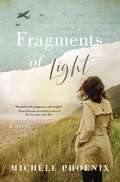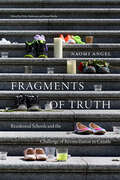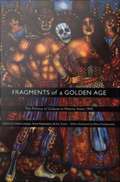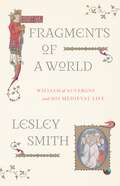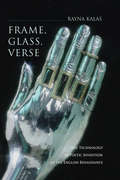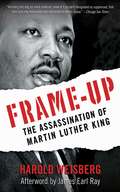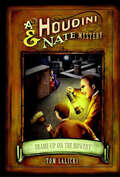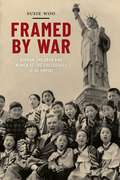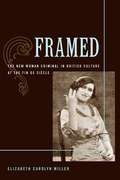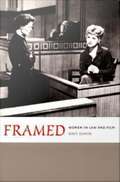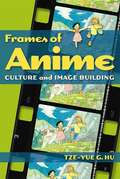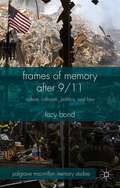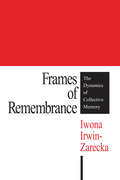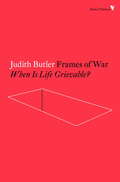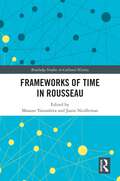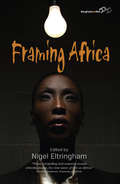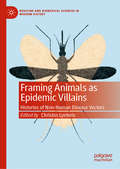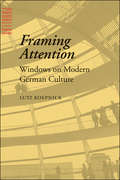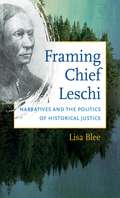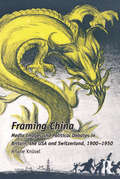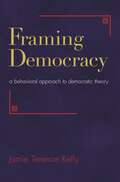- Table View
- List View
Fragments of Light
by Michele PhoenixAn impossible decision in the chaos of D-Day. Ripples that cascade seventy-five years into the present. And two lives transformed by the tenuous resolve to reach out of the darkness toward fragments of light. Cancer stole everything from Ceelie—her peace of mind, her self-image, perhaps even her twenty-three-year marriage to her college sweetheart, Nate. Without the support of Darlene, her quirky elderly friend, she may not have been able to endure so much loss.So when Darlene&’s prognosis turns dire, Ceelie can&’t refuse her seemingly impossible request—to find a WWII paratrooper named Cal, the father who disappeared when Darlene was an infant, leaving a lifetime of desolation in his wake.The search that begins in the farmlands of Missouri eventually leads Ceelie to a small town in Normandy, where she uncovers the harrowing tale of the hero who dropped off-target into occupied France.Alternating between Cal&’s D-Day rescue by two young French sisters and Ceelie&’s present-day journey through trial and heartbreak, Fragments of Light poses a timeless question: When life becomes unbearable, will you press toward the light or let the darkness win?Praise for Fragments of Light&“With depth of emotion and vivid images of a war-torn WWII world, Fragments of Light nails down the achingly real in a character&’s journey, tackling both raw and poignant moments from a practiced pen. Michele Phoenix shines a spotlight on God&’s chasm-crossing persistence to rebuild the shattered places of our lives—and the people He uses to do it—no matter how much time has passed between brokenness and the quest for healing. Readers will root for Ceelie and Nate long after they&’ve turned the last page!&” —Kristy Cambron, bestselling author of The Butterfly and the Violin and the Lost Castle novels&“Michèle Phoenix skillfully explores the strength and resiliency of the human spirit but also its heartbreaking limits. Brimming with expertly researched wartime details, Fragments of Light abounds with poignancy and insight.&” —Susan Meissner, bestselling author of The Last Year of the War&“Ceelie&’s anguish and hope, Darlene&’s spunk and pain, and Cal&’s courage and conviction—all of it combines to create a story as beautiful as it is heartbreaking. In short, I loved this book!&” —Lauren Denton, USA TODAY bestselling author of The Hideaway and The Summer House&“A compelling story across time of love, loss, and what happens when tragedy strikes." —Katherine Reay, bestselling author of Dear Mr. Knightley and The Printed Letter Bookshop&“An immersive and unforgettable treatise on the power of love in all of its manifestations." —Rachel McMillon, author of The London Restoration&“It&’s not often a story moves me as Fragments of Light has. With a rare and honest voice, Michèle Phoenix weaves a story of heroes from yesteryear and also those from your neighborhood—each with hearts of valor—as they endure the fight of their lives." —Elizabeth Byler Younts, Carol Award–winning author of The Solace of Water
Fragments of Truth: Residential Schools and the Challenge of Reconciliation in Canada
by Naomi AngelIn 2008, the Canadian government established a Truth and Reconciliation Commission (TRC) to review the history of the residential school system, a brutal colonial project that killed and injured many Indigenous children and left a legacy of trauma and pain. In Fragments of Truth Naomi Angel analyzes the visual culture of reconciliation and memory in relation to this complex and painful history. In her analyses of archival photographs from the residential school system, representations of the schools in popular media and literature, and testimonies from TRC proceedings, Angel traces how the TRC served as a mechanism through which memory, trauma, and visuality became apparent. She shows how many Indigenous communities were able to use the TRC process as a way to claim agency over their memories of the schools. Bringing to light the ongoing costs of transforming settler states into modern nations, Angel demonstrates how the TRC offers a unique optic through which to survey the long history of colonial oppression of Canada’s Indigenous populations.
Fragments of War: Stories from Survivors of World War II
by Earle Birney Joyce HibbertThe young girl from the Ottawa Valley who served as a nurse in North Africa with only a helmet of fresh water a day, the teenage soldier from Fredericton who stole pig swill to survive in a Hong Kong prisoner of war camp, the English woman who survived the sinking of the Athenia to become a war-bride, and an Alberta airman who crashed off the icy coast of Greenland, these are but only four of the thirty compelling personal accounts of war experiences. Many private photographs from their own albums illustrate these stories, which reflect the world wide aspect of the war from the Indian Ocean to the North Atlantic, from Poland to the Middle East, and the varied activities and duties of these young men and women. Their hardships, their adventures, frustrations, fears, joys and romances are chronicled in a poignant and often humorous manner.
Fragments of a Golden Age: The Politics of Culture in Mexico Since 1940
by Gilbert M. Joseph Anne Rubenstein Eric ZolovDuring the twentieth century the Mexican government invested in the creation and promotion of a national culture more aggressively than any other state in the western hemisphere. Fragments of a Golden Age provides a comprehensive cultural history of the vibrant Mexico that emerged after 1940. Agreeing that the politics of culture and its production, dissemination, and reception constitute one of the keys to understanding this period of Mexican history, the volume's contributors--historians, popular writers, anthropologists, artists, and cultural critics--weigh in on a wealth of topics from music, tourism, television, and sports to theatre, unions, art, and magazines. Each essay in its own way addresses the fragmentation of a cultural consensus that prevailed during the "golden age" of post-revolutionary prosperity, a time when the state was still successfully bolstering its power with narratives of modernization and shared community. Combining detailed case studies--both urban and rural--with larger discussions of political, economic, and cultural phenomena, the contributors take on such topics as the golden age of Mexican cinema, the death of Pedro Infante as a political spectacle, the 1951 "caravan of hunger," professional wrestling, rock music, and soap operas. Fragments of a Golden Age will fill a particular gap for students of modern Mexico, Latin American studies, cultural studies, political economy, and twentieth century history, as well as to others concerned with rethinking the cultural dimensions of nationalism, imperialism, and modernization. Contributors. Steven J. Bachelor, Quetzil E. Castaeda, Seth Fein, Alison Greene, Omar Hernndez, Jis & Trino, Gilbert M. Joseph, Heather Levi, Rubn Martnez, Emile McAnany, John Mraz, Jeffrey M. Pilcher, Elena Poniatowska, Anne Rubenstein, Alex Saragoza, Arthur Schmidt, Mary Kay Vaughan, Eric Zolov
Fragments of a World: William of Auvergne and His Medieval Life
by Lesley SmithThe first modern biography of medieval French scholar and bishop William of Auvergne. Today, William of Auvergne (1180?–1249) is remembered for his scholarship about the afterlife as well as the so-called Trial of the Talmud. But the medieval bishop of Paris also left behind nearly 600 sermons delivered to all manner of people—from the royal court to the poorest in his care. In Fragments of a World, Lesley Smith uses these sermons to paint a vivid picture of this extraordinary cleric, his parishioners, and their bustling world. The first modern biography of the influential teacher, bishop, and theologian, Fragments of a World casts a new image of William of Auvergne for our times—deeply attuned to both the spiritual and material needs of an ever-changing populace in the medieval city.
Frame, Glass, Verse: The Technology of Poetic Invention in the English Renaissance
by Rayna KalasIn a book that draws attention to some of our most familiar and unquestioned habits of thought—from "framing" to "perspective" to "reflection"—Rayna Kalas suggests that metaphors of the poetic imagination were once distinctly material and technical in character. Kalas explores the visual culture of the English Renaissance by way of the poetic image, showing that English writers avoided charges of idolatry and fancy through conceits that were visual, but not pictorial. Frames, mirrors, and windows have been pervasive and enduring metaphors for texts from classical antiquity to modernity; as a result, those metaphors seem universally to emphasize the mimetic function of language, dividing reality from the text that represents it. This book dissociates those metaphors from their earlier and later formulations in order to demonstrate that figurative language was material in translating signs and images out of a sacred and iconic context and into an aesthetic and representational one. Reading specific poetic images—in works by Spenser, Shakespeare, Gascoigne, Bacon, and Nashe—together with material innovations in frames and glass, Kalas reveals both the immanence and the agency of figurative language in the early modern period.Frame, Glass, Verse shows, finally, how this earlier understanding of poetic language has been obscured by a modern idea of framing that has structured our apprehension of works of art, concepts, and even historical periods. Kalas presents archival research in the history of frames, mirrors, windows, lenses, and reliquaries that will be of interest to art historians, cultural theorists, historians of science, and literary critics alike. Throughout Frame, Glass, Verse, she challenges readers to rethink the relationship of poetry to technology.
Frame-Up: The Assassination of Martin Luther King
by James Earl Ray Harold WeisbergBack in print with its original title, Harold Weisberg's detailed and devastating analysis of the Martin Luther King assassination is as timely as ever. Originally published in 1970, this book examines the circumstances of the murder, accused assassin James Earl Ray's flight and capture, and the failures of the justice system in this case.While many books about the King assassination have followed Frame-Up, this work remains unrivaled in its retelling of the circumstances which led Ray to plead guilty in a grossly inadequate "mini trial," and Ray's almost immediate failed attempt to retract this confession.Weisberg also dissects the evidence in the case, and concludes that while Ray was a part of the conspiracy, he did not shoot Dr. King, serving as another "patsy" in the troubling assassinations of the 1960s.
Frame-up on the Bowery (Houdini & Nate Mysteries)
by Tom LalickiDuring Yuletide 1911, a brutal Midtown murder shocks the denizens of New York City. After a mutual friend is wrongly accused of being the killer, young sleuth Nate Fuller, along with his famous mentor Harry Houdini, is determined to solve the case. For starters, Houdini and Nate are certain their friend has been framed. But why? By whom? And how can they save him? In their new adventure, old New York's acclaimed detecting duo brave the rough-and-tumble streets of the Lower East Side, where colorful, conniving characters abound, and the only thing certain is danger every step of the way.
Framed Visions: Popular Culture, Americanization, and the Contemporary German and Austrian Imagination (Social History, Popular Culture, And Politics In Germany)
by Gerd GemundenFramed Visions analyzes the pivotal role American mass media and popular culture have played in shaping the political, social, and psychological identity of postwar Germans and Austrians. Through detailed readings of films, novels, plays, and poems of a variety of contemporary artists--including Rainer Werner Fassbinder, Wim Wenders, Elfriede Jelinek, Herbert Achternbusch, Monika Treut, Peter Handke, and Rolf Dieter Brinkmann--Gerd Gemuinden reveals the paradoxical stance of this generation toward American politics and Hollywood aesthetics. On the one hand, they are pulled toward a culture that has shaped childhood images, tastes and desires; on the other, they reject American politics and the colonizing effect of its mass culture. In contrast to most scholarship about the reception of U.S. culture abroad, this study underscores the imaginary relation of contemporary German and Austrian artists to America. Topics such as "Americanization" and "cultural imperialism" are therefore treated not as a foreign principle imposed from the outside but as ways that German and Austrian artists have tried to come to terms with their own problematic culture and history. Gem_nden's study elucidates how the culture of the United States has been mapped in contradictory ways onto questions of national and cultural identity in Germany and Austria over the last thirty years. Gerd Gemuinden is Assistant Professor of German and Comparative Literature, Dartmouth College.
Framed by War: Korean Children and Women at the Crossroads of US Empire (Nation of Nations #30)
by Susie WooAn intimate portrait of the postwar lives of Korean children and women Korean children and women are the forgotten population of a forgotten war. Yet during and after the Korean War, they were central to the projection of US military, cultural, and political dominance. Framed by War examines how the Korean orphan, GI baby, adoptee, birth mother, prostitute, and bride emerged at the heart of empire. Strained embodiments of war, they brought Americans into Korea and Koreans into America in ways that defined, and at times defied, US empire in the Pacific. What unfolded in Korea set the stage for US postwar power in the second half of the twentieth century and into the twenty-first. American destruction and humanitarianism, violence and care played out upon the bodies of Korean children and women. Framed by War traces the arc of intimate relations that served as these foundations. To suture a fragmented past, Susie Woo looks to US and South Korean government documents and military correspondence; US aid organization records; Korean orphanage registers; US and South Korean newspapers and magazines; and photographs, interviews, films, and performances. Integrating history with visual and cultural analysis, Woo chronicles how Americans went from knowing very little about Koreans to making them family, and how Korean children and women who did not choose war found ways to navigate its aftermath in South Korea, the United States, and spaces in between.
Framed by War: Korean Children and Women at the Crossroads of US Empire (Nation of Nations #30)
by Susie WooAn intimate portrait of the postwar lives of Korean children and women Korean children and women are the forgotten population of a forgotten war. Yet during and after the Korean War, they were central to the projection of US military, cultural, and political dominance. Framed by War examines how the Korean orphan, GI baby, adoptee, birth mother, prostitute, and bride emerged at the heart of empire. Strained embodiments of war, they brought Americans into Korea and Koreans into America in ways that defined, and at times defied, US empire in the Pacific. What unfolded in Korea set the stage for US postwar power in the second half of the twentieth century and into the twenty-first. American destruction and humanitarianism, violence and care played out upon the bodies of Korean children and women. Framed by War traces the arc of intimate relations that served as these foundations. To suture a fragmented past, Susie Woo looks to US and South Korean government documents and military correspondence; US aid organization records; Korean orphanage registers; US and South Korean newspapers and magazines; and photographs, interviews, films, and performances. Integrating history with visual and cultural analysis, Woo chronicles how Americans went from knowing very little about Koreans to making them family, and how Korean children and women who did not choose war found ways to navigate its aftermath in South Korea, the United States, and spaces in between.
Framed: The New Woman Criminal in British Culture at the Fin de Siecle
by Elizabeth Carolyn MillerFramed uses fin de siècle British crime narrative to pose a highly interesting question: why do female criminal characters tend to be alluring and appealing while fictional male criminals of the era are unsympathetic or even grotesque? In this elegantly argued study, Elizabeth Carolyn Miller addresses this question, examining popular literary and cinematic culture from roughly 1880 to 1914 to shed light on an otherwise overlooked social and cultural type: the conspicuously glamorous New Woman criminal. In so doing, she breaks with the many Foucauldian studies of crime to emphasize the genuinely subversive aspects of these popular female figures. Drawing on a rich body of archival material, Miller argues that the New Woman Criminal exploited iconic elements of late nineteenth- and early twentieth-century commodity culture, including cosmetics and clothing, to fashion an illicit identity that enabled her to subvert legal authority in both the public and the private spheres.
Framed: Women in Law and Film
by Orit KamirSome women attack and harm men who abuse them. Social norms, law, and films all participate in framing these occurrences, guiding us in understanding and judging them. How do social, legal, and cinematic conventions and mechanisms combine to lead us to condemn these women or exonerate them? What is it, exactly, that they teach us to find such women guilty or innocent of, and how do they do so? Through innovative readings of a dozen movies made between 1928 and 2001 in Europe, Japan, and the United States, Orit Kamir shows that in representing "gender crimes," feature films have constructed a cinematic jurisprudence, training audiences worldwide in patterns of judgment of women (and men) in such situations. Offering a novel formulation of the emerging field of law and film, Kamir combines basic legal concepts--murder, rape, provocation, insanity, and self-defense--with narratology, social science methodologies, and film studies. Framed not only offers a unique study of law and film but also points toward new directions in feminist thought. Shedding light on central feminist themes such as victimization and agency, multiculturalism, and postmodernism, Kamir outlines a feminist cinematic legal critique, a perspective from which to evaluate the "cinematic legalism" that indoctrinates and disciplines audiences around the world. Bringing an original perspective to feminist analysis, she demonstrates that the distinction between honor and dignity has crucial implications for how societies construct women, their social status, and their legal rights. In Framed, she outlines a dignity-oriented, honor-sensitive feminist approach to law and film.
Frames of Anime
by Tze-yue G. Huapanese anime has long fascinated the world, and its mythical heroes and dazzling colors increasingly influence popular culture genres in the West. Tze-yue G. Hu analyzes the 'language-medium' of this remarkable expressive platform and its many socio-cultural dimensions from a distinctly Asian frame of reference, tracing its layers of concentric radiation from Japan throughout Asia. Her work, rooted in archival investigations, interviews with animators and producers in Japan as well as other Asian animation studios, and interdisciplinary research in linguistics and performance theory, shows how dialectical aspects of anime are linked to Japan's unique experience of modernity and its cultural associations in Asia, including its reliance on low-wage outsourcing. Her study also provides English readers with insights on numerous Japanese secondary sources, as well as a number of original illustrations offered by animators and producers she interviewed.
Frames of Memory after 9/11
by Lucy BondFrames of Memory makes an important intervention into the emerging body of scholarship surrounding the culture and politics of the post-9/11 world. Bond provides a sweeping analysis of American memorial culture after 11 September, examining the ways in which diverse modes of commemoration, from Acts of Congress to museum exhibits, the military commissions at Guantanamo Bay to the corpus of 9/11 trauma fiction, have adhered to delimiting templates of remembrance that present an artificial impression of a unified American response to the attacks. In so doing, the book poses a series of urgent questions about the ethical and political factors at stake in the work of memory, asking why, and with what consequences, commemoration becomes an ideological endeavour; in what ways the academic discipline of memory studies influences contemporary memorial practice, and vice versa; what it means to seek justice for the dead; and how we might open the exceptionalist and exclusionary culture of memory surrounding 9/11 to a more diverse, globally oriented engagement with the recent past. "
Frames of Remembrance: The Dynamics of Collective Memory
by Iwona Irwin-ZareckaWhat is the symbolic impact of the Vietnam War Memorial? How does television change our engagement with the past? Can the efforts to wipe out Communist legacies succeed? Should victims of the Holocaust be celebrated as heroes or as martyrs? These questions have a great deal in common, yet they are typically asked separately by people working in distinct research areas in different disciplines. Frames of Remembrance shares ideas and concerns across such divides.
Frames of War: When Is Life Grievable? (Radical Thinkers)
by Judith ButlerIn Frames of War, Judith Butler explores the media's portrayal of state violence, a process integral to the way in which the West wages modern war. This portrayal has saturated our understanding of human life, and has led to the exploitation and abandonment of whole peoples, who are cast as existential threats rather than as living populations in need of protection. These people are framed as already lost, to imprisonment, unemployment and starvation, and can easily be dismissed. In the twisted logic that rationalizes their deaths, the loss of such populations is deemed necessary to protect the lives of 'the living.' This disparity, Butler argues, has profound implications for why and when we feel horror, outrage, guilt, loss and righteous indifference, both in the context of war and, increasingly, everyday life.This book discerns the resistance to the frames of war in the context of the images from Abu Ghraib, the poetry from Guantanamo, recent European policy on immigration and Islam, and debates on normativity and non-violence. In this urgent response to ever more dominant methods of coercion, violence and racism, Butler calls for a re-conceptualization of the Left, one that brokers cultural difference and cultivates resistance to the illegitimate and arbitrary effects of state violence and its vicissitudes.
Frameworks of Time in Rousseau (Routledge Studies in Cultural History)
by Jason Neidleman Masano YamashitaFrameworks of Time in Rousseau explores the ways in which Jean-Jacques Rousseau envisaged time as a diagnostic tool for understanding the state of society and the predicaments of modernity. Central to his conceptualization of both nature and history, time also plays a unique role in Rousseau’s literary and aesthetic explorations of selfhood and affect. This book brings into dialogue specialists from education, political theory, literature, and cultural studies with the aim of underscoring Rousseau’s contributions to themes that preoccupy us today such as the appreciation of slow time, the uncounted time of women’s lives, and temporal challenges related to politics and the economy.
Framing Africa
by Nigel EltringhamThe first decade of the 21st century has seen a proliferation of North American and European films that focus on African politics and society. While once the continent was the setting for narratives of heroic ascendancy over self (The African Queen, 1951; The Snows of Kilimanjaro, 1952), military odds (Zulu, 1964; Khartoum, 1966) and nature (Mogambo, 1953; Hatari!,1962; Born Free, 1966; The Last Safari, 1967), this new wave of films portrays a continent blighted by transnational corruption (The Constant Gardener, 2005), genocide (Hotel Rwanda, 2004; Shooting Dogs, 2006), 'failed states' (Black Hawk Down, 2001), illicit transnational commerce (Blood Diamond, 2006) and the unfulfilled promises of decolonization (The Last King of Scotland, 2006). Conversely, where once Apartheid South Africa was a brutal foil for the romance of East Africa (Cry Freedom, 1987; A Dry White Season, 1989), South Africa now serves as a redeemed contrast to the rest of the continent (Red Dust, 2004; Invictus, 2009). Writing from the perspective of long-term engagement with the contexts in which the films are set, anthropologists and historians reflect on these films and assess the contemporary place Africa holds in the North American and European cinematic imagination.
Framing Animals as Epidemic Villains: Histories of Non-Human Disease Vectors (Medicine and Biomedical Sciences in Modern History)
by Christos LynterisThis book takes a historical and anthropological approach to understanding how non-human hosts and vectors of diseases are understood, at a time when emerging infectious diseases are one of the central concerns of global health. The volume critically examines the ways in which animals have come to be framed as ‘epidemic villains’ since the turn of the nineteenth century. Providing epistemological and social histories of non-human epidemic blame, as well as ethnographic perspectives on its recent manifestations, the essays explore this cornerstone of modern epidemiology and public health alongside its continuing importance in today’s world. Covering diverse regions, the book argues that framing animals as spreaders and reservoirs of infectious diseases – from plague to rabies to Ebola – is an integral aspect not only to scientific breakthroughs but also to the ideological and biopolitical apparatus of modern medicine. As the first book to consider the impact of the image of non-human disease hosts and vectors on medicine and public health, it offers a major contribution to our understanding of human-animal interaction under the shadow of global epidemic threat.
Framing Attention: Windows on Modern German Culture (Parallax: Re-visions of Culture and Society)
by Lutz KoepnickIn Framing Attention, Lutz Koepnick explores different concepts of the window—in both a literal and a figurative sense—as manifested in various visual forms in German culture from the nineteenth century to the present. He offers a new interpretation of how evolving ways of seeing have characterized and defined modernity.Koepnick examines the role and representation of window frames in modern German culture—in painting, photography, architecture, and literature, on the stage and in public transportation systems, on the film screen and on television. He presents such frames as interfaces that negotiate competing visions of past and present, body and community, attentiveness and distraction. From Adolph Menzel's window paintings of the 1840s to Nam June Paik's experiments with television screens, from Richard Wagner's retooling of the proscenium stage to Adolf Hitler's use of a window as a means of political self-promotion, Framing Attention offers a theoretically incisive understanding of how windows shape and reframe the way we see the world around us and our place within it.
Framing Canadian Federalism
by Dimitry Anastakis Penny BrydenFraming Canadian Federalism assembles an impressive range of scholars to consider many important issues that relate to federalism and the history of Canada's legal, political, and social evolution. Covering themes that include the Supreme Court of Canada, changing policies towards human rights, First Nations, as well as the legendary battles between Mitchell Hepburn and W.L. Mackenzie King, this collection illustrates the central role that federalism continues to play in the Canadian polity. Editors Dimitry Anastakis and P.E. Bryden and the volume's contributors, demonstrate the pervasive effects that federalism has on Canadian politics, economics, culture, and history, and provide a detailed framework in which to understand contemporary federalism. Written in honour of John T. Saywell's half-century of accomplished and influential scholarly work and teaching, Framing Canadian Federalism is a timely and fitting tribute to one of the discipline's foremost thinkers.
Framing Chief Leschi
by Lisa BleeIn 1855 in the South Puget Sound, war broke out between Washington settlers and Nisqually Indians. A party of militiamen traveling through Nisqually country was ambushed, and two men were shot from behind and fatally wounded. After the war, Chief Leschi, a Nisqually leader, was found guilty of murder by a jury of settlers and hanged in the territory's first judicial execution. But some 150 years later, in 2004, the Historical Court of Justice, a symbolic tribunal that convened in a Tacoma museum, reexamined Leschi's murder conviction and posthumously exonerated him. In Framing Chief Leschi, Lisa Blee uses this fascinating case to uncover the powerful, lasting implications of the United States' colonial past.Though the Historical Court's verdict was celebrated by Nisqually people and many non-Indian citizens of Washington, Blee argues that the proceedings masked fundamental limits on justice for Indigenous people seeking self-determination. Underscoring critical questions about history and memory, Framing Chief Leschi challenges readers to consider whether liberal legal structures can accommodate competing narratives and account for the legacies of colonialism to promote social justice today.
Framing China: Media Images and Political Debates in Britain, the USA and Switzerland, 1900-1950
by Ariane KnüselFraming China sheds new light on Western relations with and perceptions of China in the first half of the twentieth century. In this ground-breaking book, Ariane Knüsel examines how China was portrayed in political debates and the media in Britain, the USA and Switzerland between 1900 and 1950. By focusing on the political, economic, cultural and social context that led to the construction of the particular images of China in each country, the author demonstrates that national interests, anxieties and issues influenced the way China was framed and resulted in different portrayals of China in each country. The author’s meticulous analysis of a vast amount of newspaper and magazine articles, commentaries, editorials, cartoons and newsreels that have previously not been studied before also focuses on the transnational circulation of images of China. While previous publications have dealt with the occurrence of the Yellow Peril and Red Menace in particular countries, Framing China reveals that these images were interpreted differently in every nation because they both reflected and contributed to the discursive construction of nationhood in each country and were influenced by domestic issues, cultural values, pre-existing stereotypes, pressure groups and geopolitical aspirations.
Framing Democracy: A Behavioral Approach to Democratic Theory
by Jamie Terence KellyThe past thirty years have seen a surge of empirical research into political decision making and the influence of framing effects--the phenomenon that occurs when different but equivalent presentations of a decision problem elicit different judgments or preferences. During the same period, political philosophers have become increasingly interested in democratic theory, particularly in deliberative theories of democracy. Unfortunately, the empirical and philosophical studies of democracy have largely proceeded in isolation from each other. As a result, philosophical treatments of democracy have overlooked recent developments in psychology, while the empirical study of framing effects has ignored much contemporary work in political philosophy. In Framing Democracy, Jamie Terence Kelly bridges this divide by explaining the relevance of framing effects for normative theories of democracy. Employing a behavioral approach, Kelly argues for rejecting the rational actor model of decision making and replacing it with an understanding of choice imported from psychology and social science. After surveying the wide array of theories that go under the name of democratic theory, he argues that a behavioral approach enables a focus on three important concerns: moral reasons for endorsing democracy, feasibility considerations governing particular theories, and implications for institutional design. Finally, Kelly assesses a number of methods for addressing framing effects, including proposals to increase the amount of political speech, mechanisms designed to insulate democratic outcomes from flawed decision making, and programs of public education. The first book to develop a behavioral theory of democracy, Framing Democracy has important insights for democratic theory, the social scientific understanding of political decision making, economics, and legal theory.
